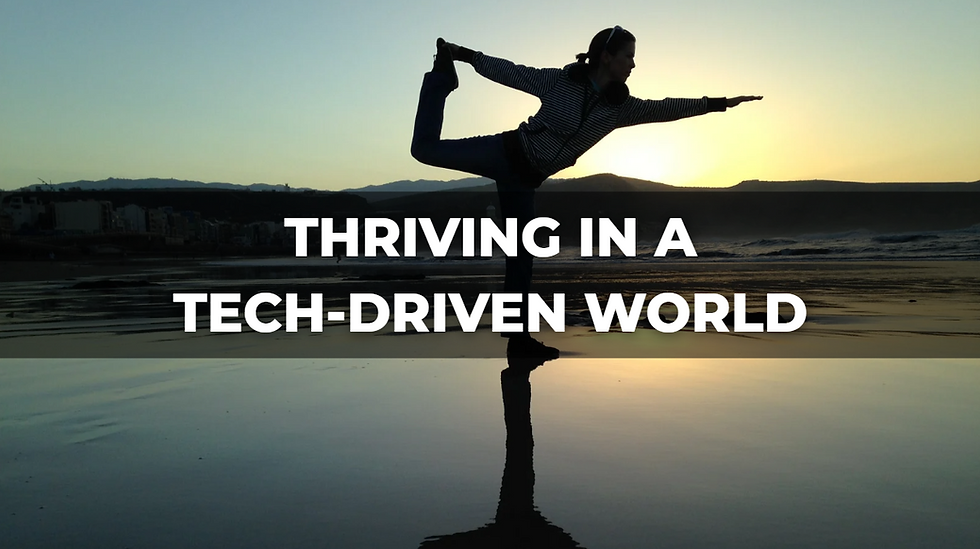Balancing Work, Tech, and Well-Being: How to Avoid Burnout in the Digital Era
- John Carlo Jimenez

- Jul 26
- 2 min read

In an era defined by digital connectivity, the promise of flexibility often comes with a price: burnout. Our constant access to emails, messages, and apps blurs the line between professional and personal life. While technology empowers us, it can also overwhelm us—leading to chronic stress, disrupted sleep, and declining mental health. So how do we regain balance?
Here’s how to thrive—not just survive—in the digital era:
1. Recognize the Signs of Digital Burnout
Burnout is more than fatigue; it's emotional exhaustion, detachment, and a sense of ineffectiveness. Research from the American Psychological Association shows that over 40% of workers feel technology makes it hard to disconnect from work. Left unchecked, this constant connectivity contributes to increased stress, reduced productivity, and even health issues.
2. Set Boundaries with Tech—And Stick to Them
Establish work and personal time boundaries. That means:
Turn off non-essential notifications
Avoid checking emails after hours
Create tech-free zones or times (e.g., during meals or before bed)
Studies reveal it takes over 23 minutes to refocus after a digital interruption. Limiting screen exposure, especially before sleep, also prevents melatonin disruption and improves rest.
3. Embrace Digital Minimalism
Audit your digital environment. Do you need all those apps and accounts? Removing unused tools and unfollowing anxiety-inducing content reduces distractions and helps you reclaim mental space.
Decluttering your digital life makes room for intentional, focused use of technology that supports—not sabotages—your goals.
4. Take Regular Breaks and Prioritize Self-Care
True productivity requires rest. Breaks throughout the day enhance cognitive performance, and even short digital detoxes can reduce stress. Spend time on:
Physical activity
Hobbies and offline activities
In-person interactions with friends or family
These small acts counterbalance the demands of digital life and recharge your energy.
5. Use Tech to Support, Not Control, Your Life
Technology can help if used wisely. Leverage tools for time management and remote collaboration—but avoid the trap of being "always available." Set expectations with clients or coworkers about your availability outside of work hours.
When used mindfully, technology becomes a powerful ally instead of a constant drain.
6. Employers Matter Too
Work-life balance isn’t just an individual responsibility. Organizations must promote a culture of well-being by:
Encouraging flexible work hours
Respecting after-hours boundaries
Providing resources for mental health support
Employees who feel supported are more engaged, loyal, and productive—benefiting everyone.
In Summary
Burnout in the digital era is real—but avoidable. Through mindful boundaries, intentional tech use, and prioritizing self-care, individuals and organizations can create a healthier, more sustainable relationship with work and technology.
Remember: Even in a connected world, it’s okay to unplug. Productivity begins with well-being—and that’s something worth protecting.
Disclaimer: This blog article was created with the help of artificial intelligence and was reviewed by our marketing team.
References:




Comments